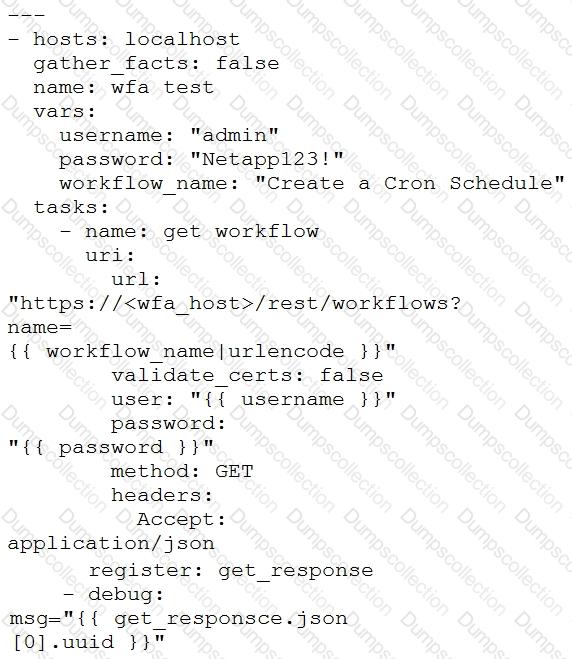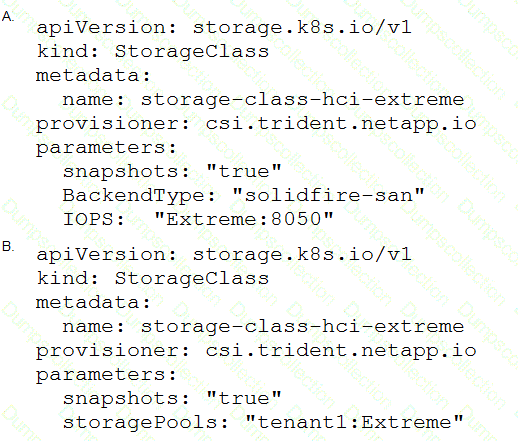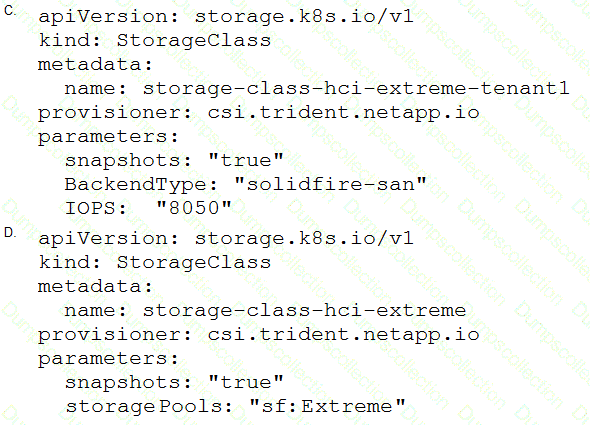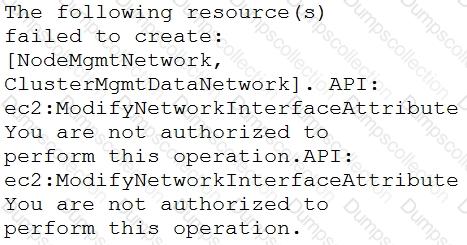Netapp NetApp Certified Hybrid Cloud Implementation Engineer NS0-402 Exam Dumps: Updated Questions & Answers (December 2025)
A customer has a legal requirement to hold data that has a 30-year retention period. The data cannot be
modified when it is under hold. If the legal hold for any of the data ends, that data must be removed. In this scenario, what are two solutions that satisfy the customer's requirements? (Choose two.)
You are performing a default deployment using Kubernetes.
In this scenario, where is persistent data stored?
You are using NetApp Cloud Manager to deploy NetApp Cloud Volumes ONTAP, and the deployment fails.
In this scenario, which three methods would you use to help diagnose the error? (Choose three.)
What are two differences between a container and a VM? (Choose two.)
You have existing OnCommand Workflow Automation workflows. You are required to run these existing workflows in Ansible.

When you run the playbook that is shown in the exhibit, what is displayed?
You are setting up a containerized environment with persistent storage. Trident has been installed, and the Trident back end for NetApp SolidFire has been created by using the tridentctl command. Now, you need to deploy an application that requires an Extreme class of service.

Referring to the exhibit, which two configurations would accomplish this task? (Choose two.)


Which file would you configure to ensure that certain files are never committed to a local Git repository?
You are sending API commands to NetApp Cloud Manager.
In this scenario, which type of authorization is used?
A customer has implemented a NetApp-based hybrid cloud solution using NetApp Cloud Volumes ONTAP for AWS and NetApp Cloud Volumes ONTAP for Azure. Users are complaining about slow read and write speeds when they access data from Microsoft Azure while they are using compute resources in AWS.
Which three actions would solve the problem? (Choose three.)
While creating a Cloud Volumes ONTAP cluster in Amazon Web Service (AWS) in Cloud Manager, you receive the message shown in the exhibit.

What is the root cause of this problem?

